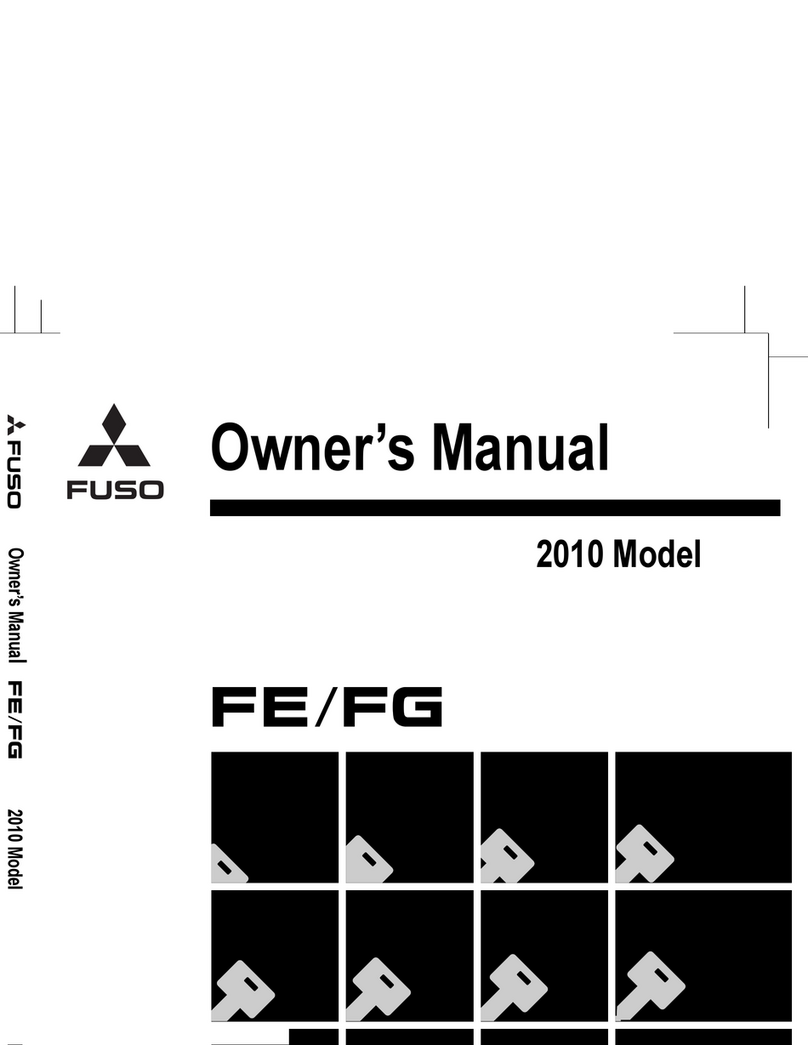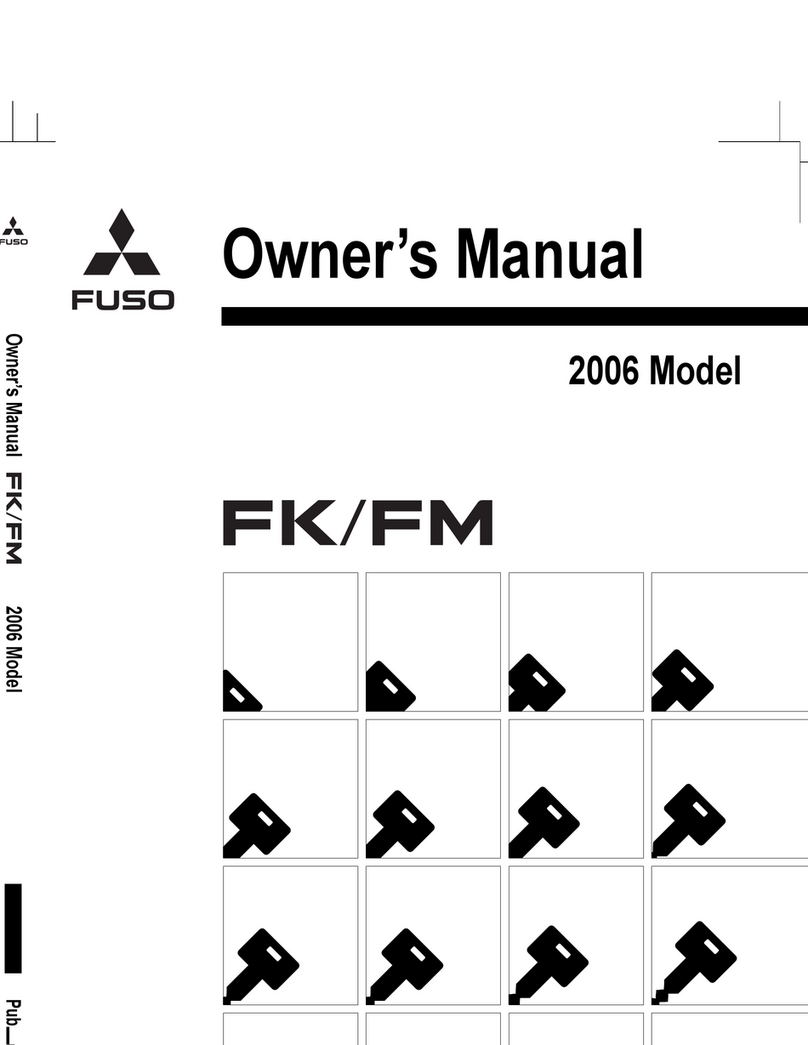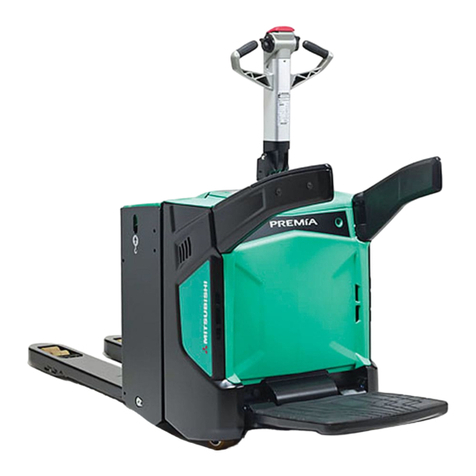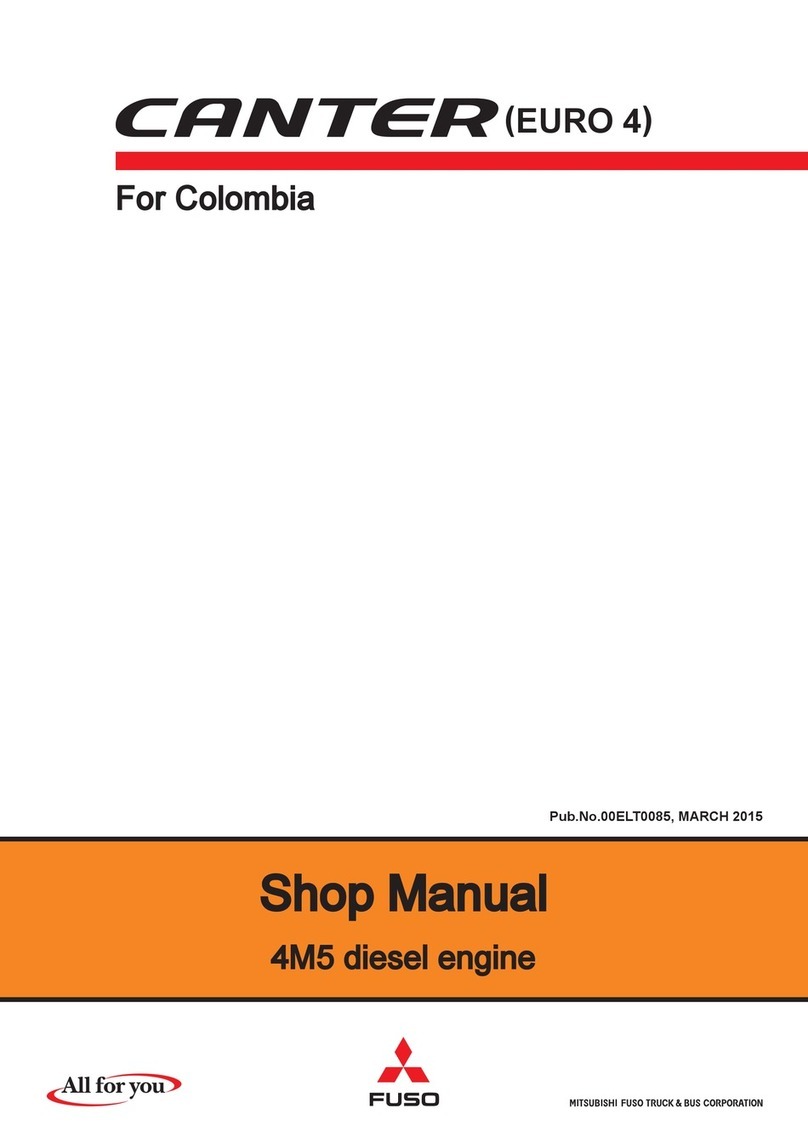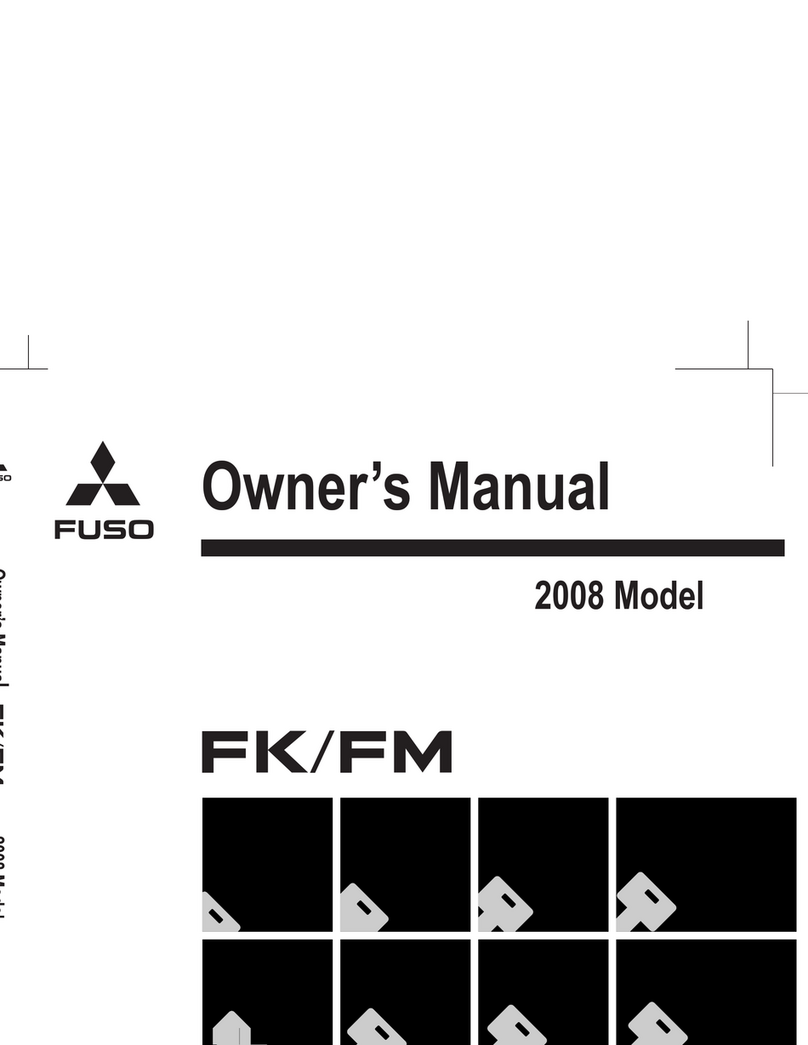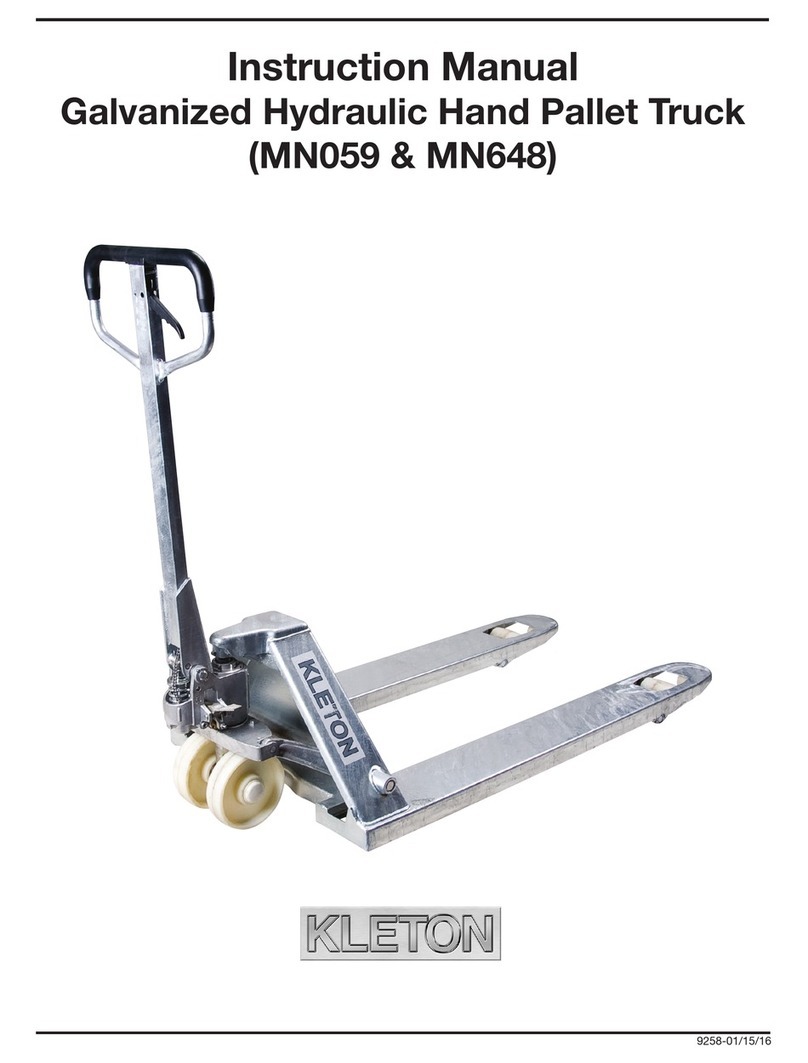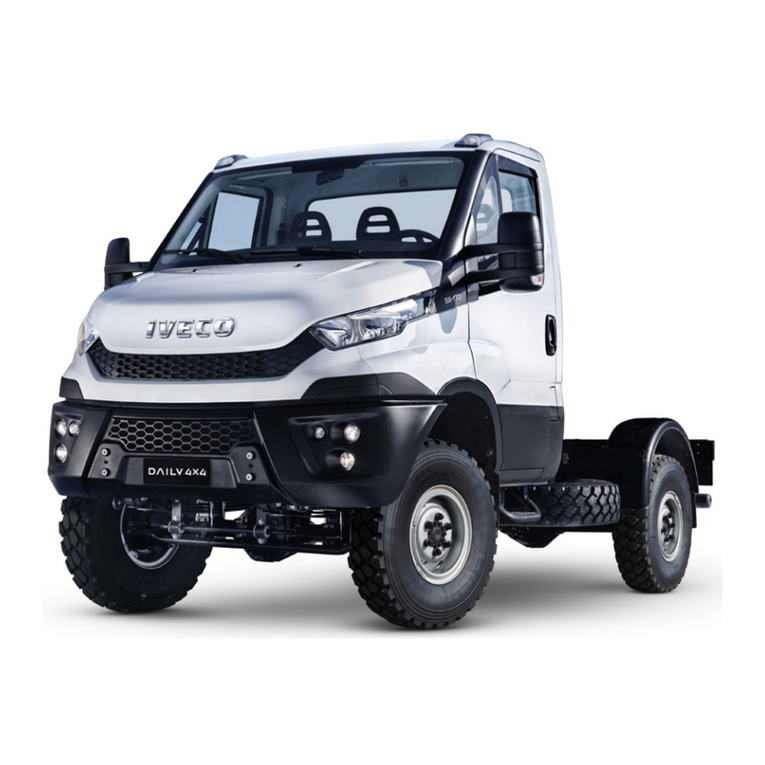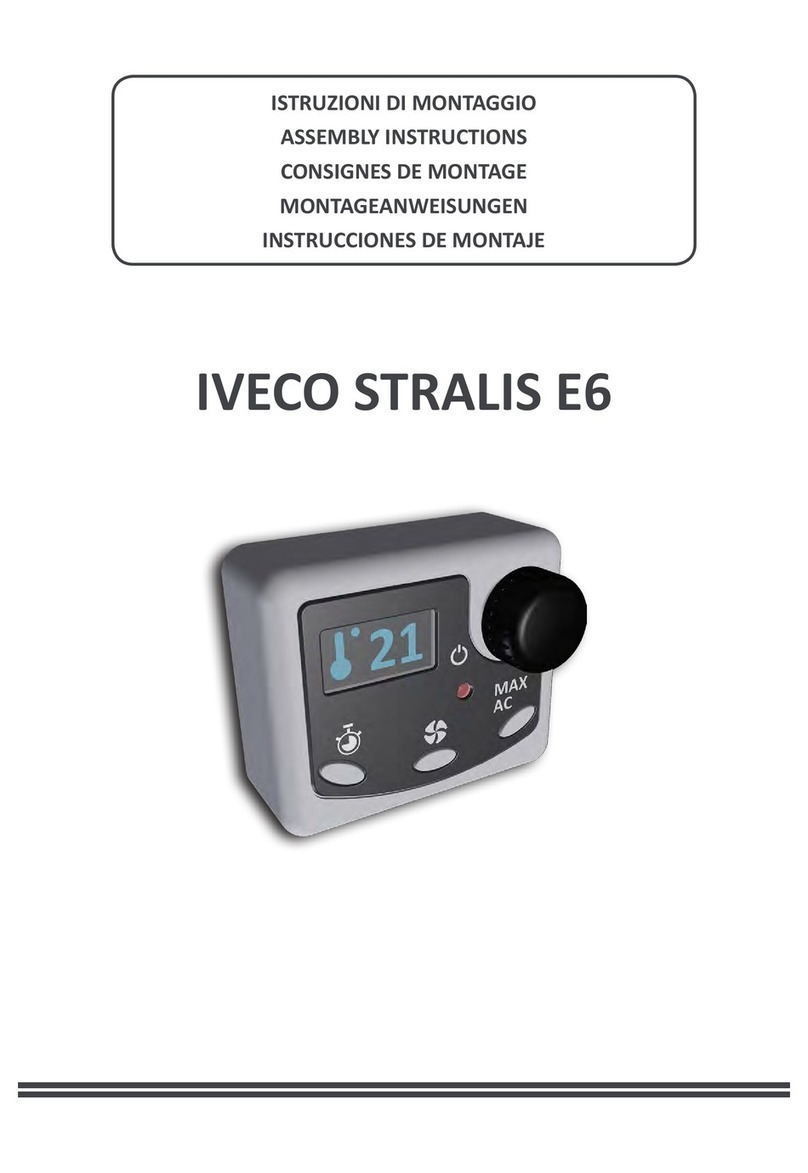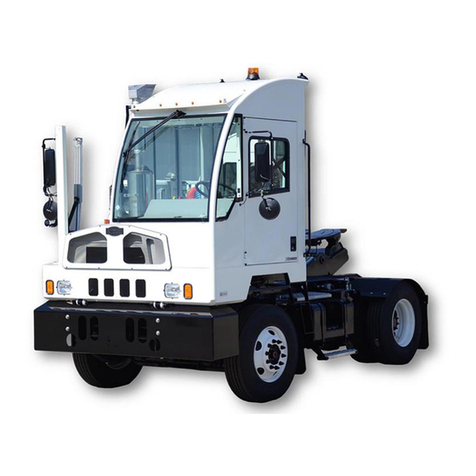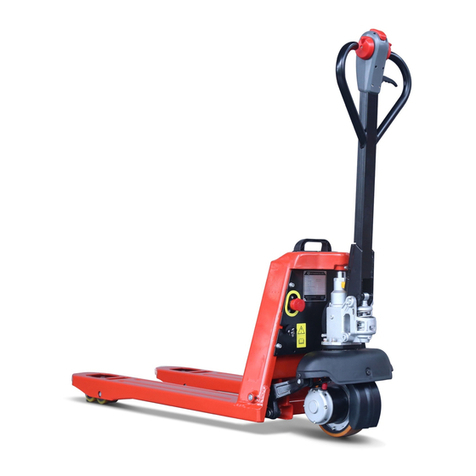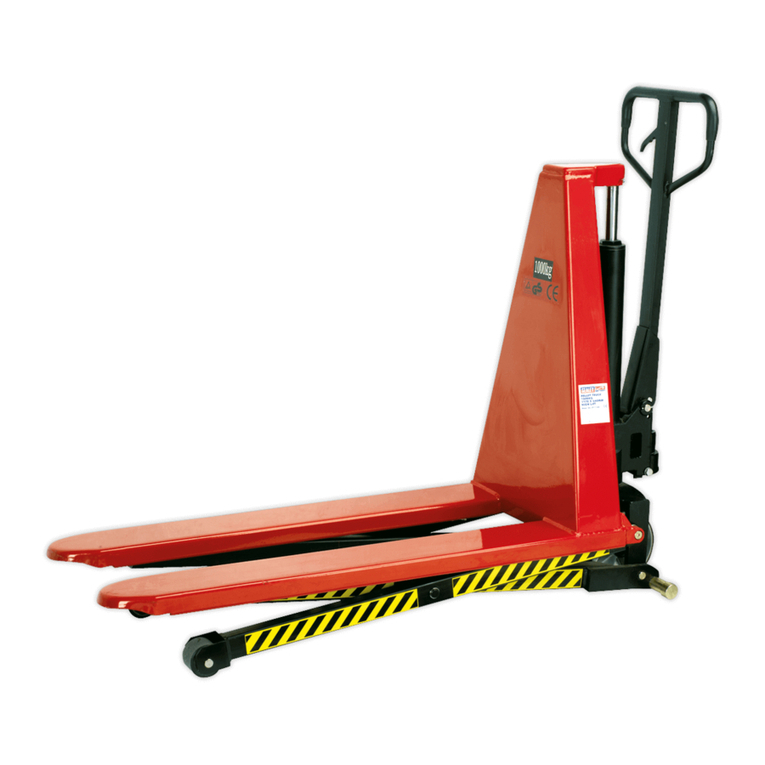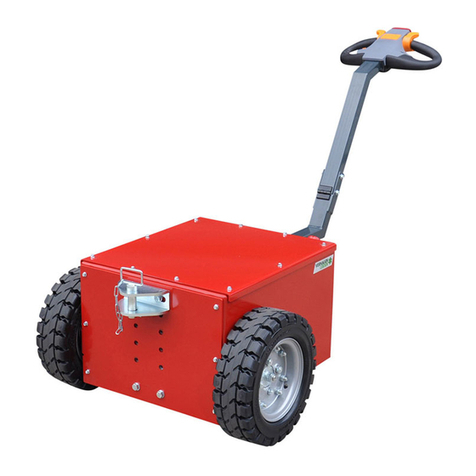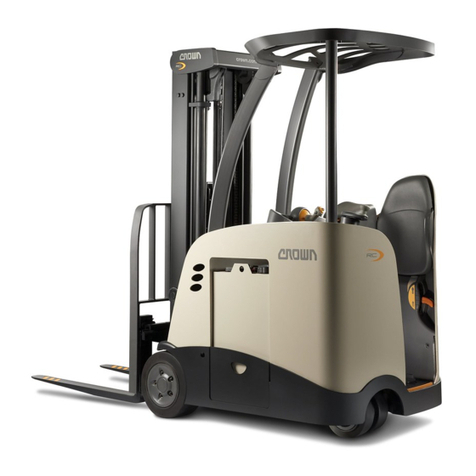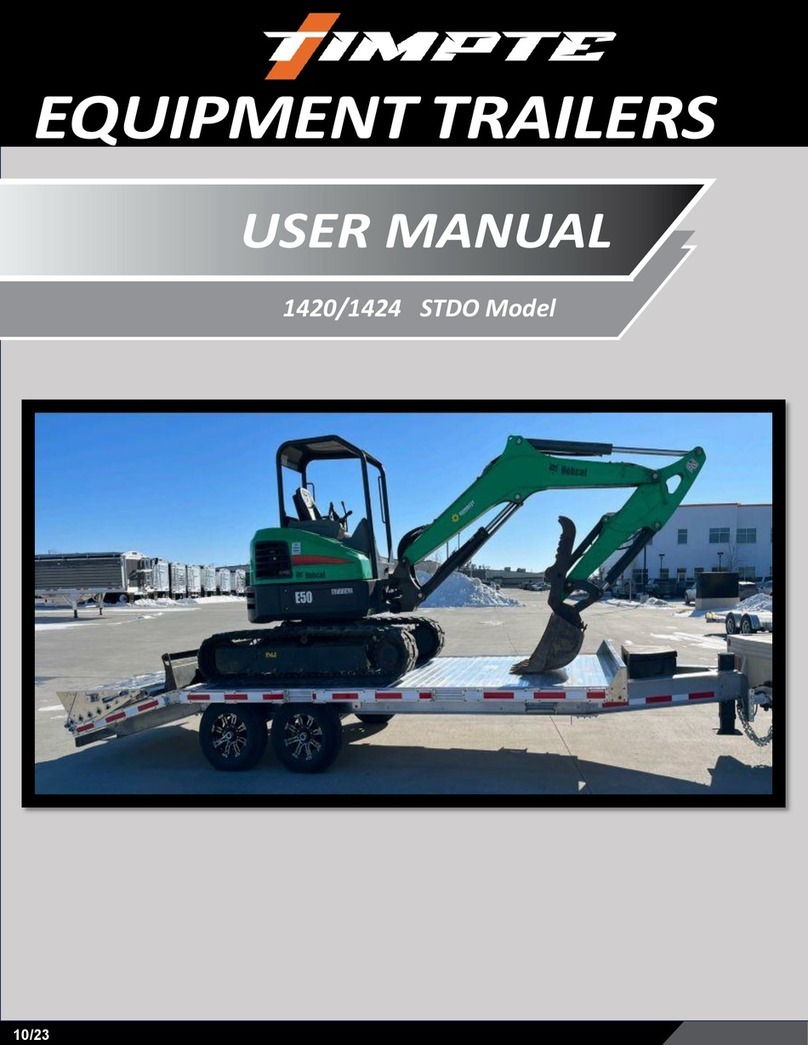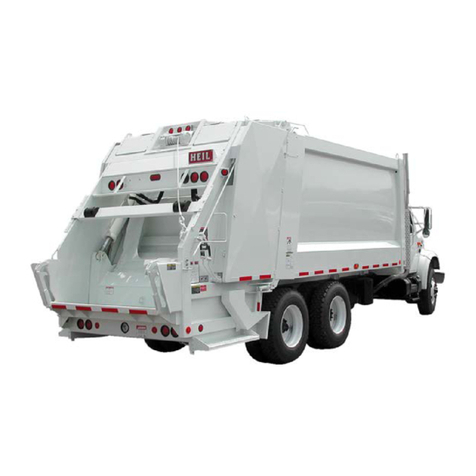Mitsubishi Fuso FE Series 2008 User manual

SERVICE MANUAL
2008 Model
FOREWORD
This Service Manual contains maintenance and repair
methods for the Mitsubishi Fuso Truck FE. FG Series.
Read this manual carefully as an aid in providing cor-
rect, efficient maintenance. Please note that the infor-
mation and specifications contained within this manual
may change without notice. This is due to product
modifications and continued vehicle improvements
that are made throughout the model years. Should you
encounter any discrepancy in the information provid-
ed, please do not hesitate to contact your nearest Mi-
tsubishi Fuso Dealer or Mitsubishi Fuso Truck of
America, Inc.
AUGUST 2007
GROUP INDEX
GENERAL .............................................. 00
MAINTENANCE SCHEDULE ................. 01
ENGINE................................................... 11
LUBRICATION ........................................ 12
FUEL AND ENGINE CONTROL............. 13A
COMMON RAIL SYSTEM.....................13EA
AUTO CRUISE AND VEHICLE
SPEED LIMITATION SYSTEM .............13EB
COOLING................................................ 14
INTAKE AND EXHAUST ........................ 15
EMISSION CONTROL ............................ 17
CLUTCH.................................................. 21
MANUAL TRANSMISSION .................... 22
AUTOMATIC TRANSMISSION............... 23
TRANSFER............................................. 24
PROPELLER SHAFT ............................. 25
FRONT AXLE
<FE> ..................................................... 26A
<FG>..................................................... 26B
REAR AXLE............................................ 27
WHEEL AND TIRE ................................. 31
FRONT SUSPENSION ........................... 33
REAR SUSPENSION.............................. 34
BRAKE.................................................... 35A
ANTI-LOCK BRAKE SYSTEM (ABS) .... 35E
PARKING BRAKE .................................. 36
STEERING .............................................. 37
BUMPER AND FRAME .......................... 41
CAB......................................................... 42
DOOR...................................................... 43
EXTERIOR .............................................. 51
INTERIOR ............................................... 52
ELECTRICAL.......................................... 54
HEATER, AIR-CONDITIONER
AND VENTILATION ................................ 55
HOME

General
Group 00
Pub.No.TWSE0805-00
Table of Contents
Back
Home

00-1
INDEX
EQUIPMENT TYPE CODES LIST...................................................... 00-2
POWER TRAIN TABLE ...................................................................... 00-3
HOW TO READ THIS MANUAL ........................................................ 00-4
CHASSIS NUMBER, ENGINE NUMBER,
POWER TRAIN LABEL ..................................................................... 00-8
VEHICLE IDENTIFICATION NUMBER ............................................. 00-9
PRECAUTIONS FOR MAINTENANCE OPERATION ..................... 00-10
JACKING UP THE VEHICLE .......................................................... 00-22
DIAGNOSIS CODES
1. Diagnosis Codes ....................................................................... 00-24
2. Reading and Erasing the Diagnosis Code ................................. 00-25
TABLE OF STANDARD TIGHTENING TORQUES.......................... 00-30

00-2
Component Name plate marking Code description
Engine
4M50T7 4 M 5 0 T 7
Power version number
Turbocharged
Order of development within same series
Order of development among different series
Diesel engine
No. of cylinders (4)
Clutch
C5W33 C 5 W 33
Disc outside diameter
Facing material (W: Woven)
Load carrying capacity of truck class (tonnage)
on which the clutch is primarily used
Initial letter of the clutch
Transmission
M036S5W M 036 S 5 W
Variation (W: With directly-mounted transfer)
Forward speeds
Type of mesh (S: Synchromesh)
Load carrying capacity of truck class (tonnage)
on which the clutch is primarily used
Initial letter of the transmission
Propeller shaft
P3 P 3
Load carrying capacity of truck class (tonnage)
on which the clutch is primarily used
Initial letter of the propeller shaft
Front axle
F200T F 200 T
Vehicle type (T: Truck)
Load carrying capacity of truck class (tonnage)
on which the clutch is primarily used
Initial letter of the front axle
Rear axle
R033T R 03 3 T
Vehicle type (T: Truck)
Order of development within same series
Load carrying capacity of truck class (tonnage)
on which the clutch is primarily used
Initial letter of the rear axle
Reduction and differential
D033H D 03 3 H
Tooth profile (H: Hypoid gear)
Order of development within same series
Load carrying capacity of truck class (tonnage)
on which the clutch is primarily used
Initial letter of the reduction & differential
EQUIPMENT TYPE CODES LIST

00
00-3
Vehicle model Engine Clutch Transmission Propeller shaft Rear axle Reduction &
differential
FE83DDZSLSUH 4M50T8 Torque
converter M036A6 P3 R033T D033H
FE83DEZSLSUH 4M50T8 Torque
converter M036A6 P3 R033T D033H
FE83DGZSLSUH 4M50T8 Torque
converter M036A6 P3 R033T D033H
FE84DDZSLSUH 4M50T8 Torque
converter M036A6 P3 R033T D033H
FE84DEZSLSUH 4M50T8 Torque
converter M036A6 P3 R033T D033H
FE84DGZSLSUH 4M50T8 Torque
converter M036A6 P3 R033T D033H
FE84DHWSLSUH 4M50T8 Torque
converter M036A6 P3 R033T D033H
FE84DJZSLSUH 4M50T8 Torque
converter M036A6 P3 R033T D033H
FE85DDZSLSUG 4M50T8 C5W33 M036S6 P3 R035T D035H
FE85DEZSLSUG 4M50T8 C5W33 M036S6 P3 R035T D035H
FE85DGZSLSUG 4M50T8 C5W33 M036S6 P3 R035T D035H
FE85DJZSLSUG 4M50T8 C5W33 M036S6 P3 R035T D035H
FE85DKZSLSUG 4M50T8 C5W33 M036S6 P3 R035T D035H
FE85DDZSLSUH 4M50T8 Torque
converter M036A6 P3 R035T D035H
FE85DEZSLSUH 4M50T8 Torque
converter M036A6 P3 R035T D035H
FE85DGZSLSUH 4M50T8 Torque
converter M036A6 P3 R035T D035H
FE85DJZSLSUH 4M50T8 Torque
converter M036A6 P3 R035T D035H
FE85DKZSLSUH 4M50T8 Torque
converter M036A6 P3 R035T D035H
FG84DF6SLSUJ 4M50T7 C5W33 M036S5W Front: P2
Rear: P3 R033T Front: D1H
Rear: D033H
POWER TRAIN TABLE

00-4
This manual consists of the following parts:
•Specifications
•Structure and Operation
•Troubleshooting
•On-vehicle Inspection and Adjustment
•Service procedures
On-vehicle Inspection and Adjustment
•Procedures for inspection and adjustment of individual parts and assemblies as mounted on the vehicle are de-
scribed including specific items to check and adjust. Specified or otherwise, inspection should be performed for
looseness, play, backlash, crack, damage, etc.
Service procedures
•Procedures for servicing components and parts off the vehicle are described centering on key points in their re-
moval, installation, disassembly, reassembly, inspection, etc.
Inspection
•Check items subject to “acceptable/unacceptable” judgement on the basis of service standards are all given.
•Some routine visual checks and cleaning of some reused parts are not described but must always be included in
actual service work.
Caution
•This service manual contains important cautionary instructions and supplementary information under the following
four headings which identify the nature of the instructions and information:
Terms and Units
•Front and rear
The forward running direction of the vehicle is referred to as the front and the reverse running direction is referred
to as the rear.
•Left and right
Left hand side and right hand side, when facing the forward running direction of the vehicle, are respectively left
and right.
Standard value
•Standard value dimensions in designs indicating: the design dimensions of individual parts, the standard clear-
ance between two parts when assembled, and the standard value for an assembly part, as the case may be.
Limit
•When the value of a part exceeds this, it is no longer serviceable in respect of performance and strength and must
be replaced or repaired.
DANGER Precautions that should be taken in handling potentially dangerous substances
such as battery fluid and coolant additives.
WARNING Precautionary instructions, which, if not observed, could result in serious injury or
death.
CAUTION Precautionary instructions, which, if not observed, could result in damage to or de-
struction of equipment or parts.
NOTE Suggestions or supplementary information for more efficient use of equipment or
better understanding.
HOW TO READ THIS MANUAL

00
00-5
Tightening torque
•Values are directly specified for out-of-standard tightening torques for bolts and nuts.
•Where there is no specified figure for tightening torque, follow the table covering standard tightening torques.
(Values for standard tightening torques are based on thread size and material.)
•When the item is to be tightened in a wet state, “wet” is indicated. Where there is no indication, read it as dry.
Units
•Tightening torques and other parameters are given in SI* units with imperial unit and metric units added in brack-
ets { }.
*SI: Le Système International d’Unités
Unit SI unit {imperial unit, metric unit} Conversion factor
Force N {lbs, kgf} 9.80665 N {2.2046 lbs, 1 kgf}
Moment of force N·m {ft.lbs, kgf·m} 9.80665 N·m {7.2329 ft.lbs, 1 kgf·m}
Pressure Positive pressure kPa {psi, kgf/cm2} 98.0665 kPa {14.22 psi, 1 kgf/cm2}
Vacuum pressure kPa {in.Hg, mmHg} 0.133322 kPa {0.03937 in.Hg, 1 mmHg}
Volume J {BTU, kcal} 4186.05 J {3.96825BTU, 1 kcal}
Heat quantity W {BTU/h, kcal/h} 1.16279W {3.96825BTU/h, 1 kcal/h}
Unit SI unit {imperial unit} Conversion factor
Length
mm {in.} 1 mm {0.03937 in.}
m {ft.} 1 m {3.2808 ft.}
km {mile} 1 km {0.6214 mile}
Mass kg {lb} 1 kg {2.2046 lb}
g {oz} 1 g {0.035274 oz}
Temperature
(in degree Celsius) °C {°F} 1°C {(1°C ×1.8 + 32)°F}
Velocity km/h {mph} 1 km/h {0.6214 mph}
m/s {ft/s} 1 m/s {3.281 ft/s}
Volume L {qts}, L {gal} 1 L {1.05336 qts}, 1 L {0.2642 gal}
cm3{cu.in.} 1 cm3{0.061023 cu.in.}
Area m2{in2}, m2{ft2}1m
2{1.550 ×103in2}, 1 m2{1.076 ×10 ft2}
Example: 390 N·m {290 ft.lbs, 40 kgf·m}
Metric unit
SI unit
Imperial unit
Example: 30 mm {1.18 in.}
SI unit
Imperial unit

00-6
Symbol Denotation Application Remarks
Tightening torque
Parts not tightened to standard torques
(standard torques specified where neces-
sary for servicing)
Specified values shown in table
See Table of Standard Tightening Torques for
parts for which no tightening torques are speci-
fied.
Locating pin Parts to be positioned for installation
Non-reusable parts Parts not to be reused
Lubricant and/or
sealant
Parts to be coated with lubricant or sealant
for assembly or installation
Necessary lubricant and/or sealant, quantity re-
quired, etc. are specified in table.
Special tool Parts for which special tools are required for
service operation
Tool name/shape and part number are shown in
table.
*a Associated part Parts associated with those removed/disas-
sembled for servicing
HOW TO READ THIS MANUAL

00
00-7

00-8
•Chassis and engine numbers are allocated to each vehicle and engine respectively in the order of production.
These numbers are required at vehicle inspection for registration.
•Power train label located in the position illustrated indicates the
vehicle model, chassis number and information relevant to the
vehicle’s power - train components.
CHASSIS NUMBER, ENGINE NUMBER, POWER TRAIN LABEL

00
00-9
•The vehicle identification number is punch-marked on the plate,
which is attached in the position as illustrated.
The vehicle identification number consists of a 17-digit set of al-
phanumeric characters. Each digit represents the following
specifications.
(1) Country J: Japan
(2) Make L: Mitsubishi Fuso
(3) Type 6: Incomplete vehicle
(4) Gross vehicle weight / Brake system
A: 10,001 to 14,000 lbs. / Hydraulic
B: 14,001 to 16,000 lbs. / Hydraulic
C: 16,001 to 19,500 lbs. / Hydraulic
(5) Line A: FE83D
B: FE84D
C: FE85D
D: FE84 W
E: FG84D
(6) Series (Wheel base) D: 2.9 to 3.19 m (9.51 to 10.46 ft.)
E: 3.2 to 3.49 m (10.49 to 11.44 ft.)
F: 3.5 to 3.79 m (11.48 to 12.43 ft.)
G: 3.8 to 4.09 m (12.46 to 13.41 ft.)
H: 4.1 to 4.39 m (13.45 to 14.40 ft.)
J: 4.4 to 4.69 m (14.43 to 15.38 ft.)
K: 4.7 to 4.99 m (15.41 to 16.37 ft.)
(7) Cab chassis type 1: Chassis cab
(8) Engine S: 4.899 L Diesel turbo charged and charge air cooled
(9) Check digit
(10) Model year 9: 2009
(11) Plant K: Kawasaki
(12) Plant sequential number
J L 6 A A D 1 S 9 K
(1) (2) (3) (4) (5) (6) (7) (8) (9) (10) (11) (12)
VEHICLE IDENTIFICATION NUMBER

00-10
DANGER
• This product contains or emits chemicals known to the State of California to cause cancer and birth de-
fects or other reproductive harm.
•Before performing service operations, inquire into the customer’s complaints and ascertain the condition by
checking the total distance traveled, the conditions under which the vehicle is operated, and other relevant factors
on the vehicle. And note the necessary information. This information will help you to service the vehicle efficiently.
•Check the location of the fault, and identify its cause. Based on
your findings, determine whether parts must be removed or dis-
assembled. Then, follow the service procedure given in this
manual.
•Perform service operations on a level surface. Before starting,
take the following preparatory steps:
•To prevent soiling and damage, place covers over the seats,
trim and floor in the cab and over the paintwork of the body.
•Prepare all the general and special tools necessary for the job.
WARNING
• Special tools must be used wherever specified in this man-
ual. Do not attempt to use other tools since they could
cause injuries and/or vehicle damage.
•After manually tilting the cab, be sure to engage the stopper with
the lock lever to secure the cab stay in a rigid state.
PRECAUTIONS FOR MAINTENANCE OPERATION

00
00-11
•Take extreme care when removing/installing heavy items such
as engine, transmission and axle. When lifting heavy items using
a cable etc., observe the following precautions.
•Identify the mass of the item being lifted. Use the cable that is
strong enough to support the mass.
•If lifting eyes are not provided on the item being lifted, tie a ca-
ble around the item taking into account the item’s center of
gravity.
•Do not allow anyone to pass or stay under a lifted item which
may possibly fall.
•Never work in shoes that have oily soles.
When working with a partner or in a group, use pre-arranged sig-
nals and pay constant attention to safety. Be careful not to touch
switches and levers unintentionally.
•Inspect for oil leakage etc. before washing the vehicle. If the or-
der is reversed, any oil leakage or fault that may exist could go
unnoticed during inspection.

00-12
•Prepare replacement parts ready for installation.
•Oil seals, packings, O-rings and other rubber parts, gaskets, and
split pins must be replaced with new ones after removal. Use
only genuine MITSUBISHI replacement parts.
•When disassembling parts, visually check them for wear, cracks,
damage, deformation, deterioration, rust, corrosion, defective ro-
tation, fatigue, clogging and any other possible defect.
•To facilitate correct reassembly of parts, make alignment marks
on them before disassembly and arrange disassembled parts
neatly. Make punch marks and other alignment marks where
they will not detract from parts’ functionality and appearance.
•After removing parts from the vehicle, cover the area to keep it
free of dust.
CAUTION
• Be careful not to mix up identical parts, similar parts and
parts that have left/right alignments.
• Keep new replacement parts and original (removed) parts
separately.
•Apply the specified oil or grease to U-seals, oil seals, dust seals
and bearings before reassembly.
•Always use the specified oils and greases when performing in-
spection or replacement. Immediately wipe away any excess oil
or grease with a rag.
PRECAUTIONS FOR MAINTENANCE OPERATION

00
00-13
•Wear safety goggles when using a grinder or welder. Wear
gloves when necessary, and watch out for sharp edges and oth-
er items that might wound your hands.
•Before working on the electrical system, disconnect the (–) bat-
tery cable to prevent short circuits.
CAUTION
• Make sure the starter switch and lighting switches are OFF
before disconnecting or connecting battery cable.
Semiconductor components may otherwise be damaged.
•Carefully handle sensors relays, and other items that are sensi-
tive to shock and heat. Do not remove or paint the cover of any
control unit.
•When separating connectors, grasp the connectors themselves
rather than the harnesses.
•To separate locking connectors, first push them in the direction
of the arrows. To reconnect locking connectors, push them to-
gether until they click.
•Before washing the vehicle, cover electrical parts to keep them
dry. (Use plastic sheets or the like.) Keep water away from har-
ness connectors and sensors and immediately wipe off any wa-
ter that gets on them.

00-14
•When applying a voltage to a part for inspection purposes,
check that the (+) and (–) cables are connected properly then
gradually increase the voltage from zero. Do not exceed the
specified voltage.
Remember that control units and sensors do not necessarily op-
erate on the battery voltage.
1. Handling Precautions for Electric Circuits
CAUTION
• Do not pierce wire insulation with test probes or alligator
clips when performing electrical inspections. Doing so can,
particularly with the chassis harness, hasten corrosion.
1.1 Inspection of harnesses
(1) Inspections with connectors fitted together
(1.1) Waterproof connectors
•Connect an inspection harness and connector A between the
connectors B of the circuit to be inspected. Perform the inspec-
tion by applying a test probe C to the connectors of the inspec-
tion harness. Do not insert the test probe C into the wire-entry
sides of the waterproof connectors since this would damage
their waterproof seals and lead to rust.
(1.2) Non-waterproof connectors
•Perform the inspection by inserting a test probe C into the wire-
entry sides of the connectors. An extra-narrow probe is required
for control unit connectors, which are smaller than other types of
connector. Do not force a regular-size probe into control unit
connectors since this would cause damage.
PRECAUTIONS FOR MAINTENANCE OPERATION

00
00-15
(2) Inspections with connectors separated
(2.1) Inspections on female terminals
•Perform the inspection by carefully inserting a test probe into the
terminals. Do not force the test probe into the terminals since
this could deform them and cause poor connections.
(2.2) Inspections on male terminals
•Perform the inspection by applying test probes directly to the
pins.
CAUTION
.
• Be careful not to short-circuit pins together with the test
probes. With control unit connectors, short-circuiting of
pins can cause damage to the control unit’s internal circuit-
ry.
•When using a multimeter to check continuity, do not allow the
test probes to touch the wrong terminals.
1.2 Inspection of connectors
(1) Visual inspection
•Check that the connectors are fitted together securely.
•Check whether wires have been separated from their terminals
due to pulling of the harness.

00-16
•Check that male and female terminals fit together tightly.
•Check for defective connections caused by loose terminals, by
rust on terminals, or by contamination of terminals by foreign
substances.
(2) Checking for loose terminals
•If connector terminal retainers become damaged, male and fe-
male terminals may not mate with each other when the connec-
tor bodies are fitted together. To check for such terminals, gently
pull each wire and see whether any terminals slip out of their
connector housings.
1.3 Inspections when a fuse blows
•Remove the fuse, then measure the resistance between ground
and the fuse’s load side.
Next, close the switch of each circuit connected to the fuse. If
the resistance measurement between any switch and ground is
zero, there is a short circuit between the switch and the load. If
the resistance measurement is not zero, the circuit is not cur-
rently short-circuited; the fuse probably blew due to a momen-
tary short circuit.
•The main causes of short circuits are as follows:
•Harnesses trapped between chassis parts
•Harness insulation damage due to friction or heat
•Moisture in connectors or circuitry
•Human error (accidental short-circuiting of components)
PRECAUTIONS FOR MAINTENANCE OPERATION

00
00-17
1.4 Inspection of chassis ground
•A special ground bolt is used to tighten a ground terminal. When
servicing the ground point, be sure to follow the procedures de-
scribed below:
•When reinstalling the ground bolt
Tighten the ground bolt to the specified torque.
•When relocating the ground point
A special ground bolt must be used. Spot-weld a nut to a
frame and tighten the ground bolt to the specified torque. Be
sure to apply touch-up paint to the welded point.
2. Service Precautions for Alternators
•When servicing alternators, observe the following precautions:
•Never reverse the polarity of battery connections.
If the polarity of the battery connections were to be reversed,
a large current would flow from the battery to the alternator,
damaging the diodes and regulator.
•Never disconnect the battery cables with the engine running.
Disconnection of the battery cables during engine operation
would cause a surge voltage, leading to deterioration of the di-
odes and regulator.
•Never perform inspections using a high-voltage multimeter.
The use of a high-voltage multimeter could damage the diodes
and regulator.
This manual suits for next models
20
Table of contents
Other Mitsubishi Truck manuals

